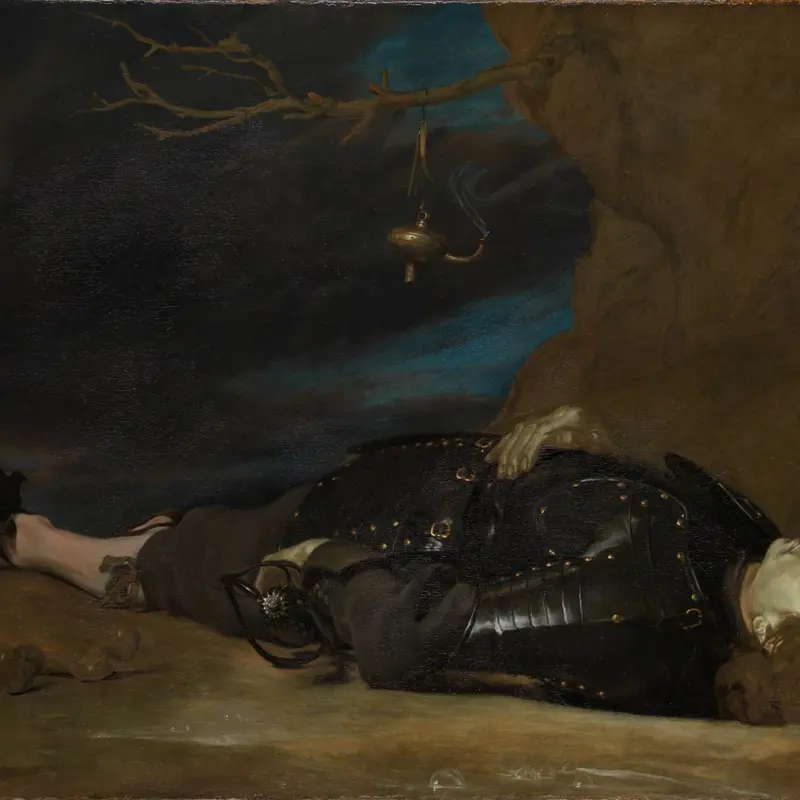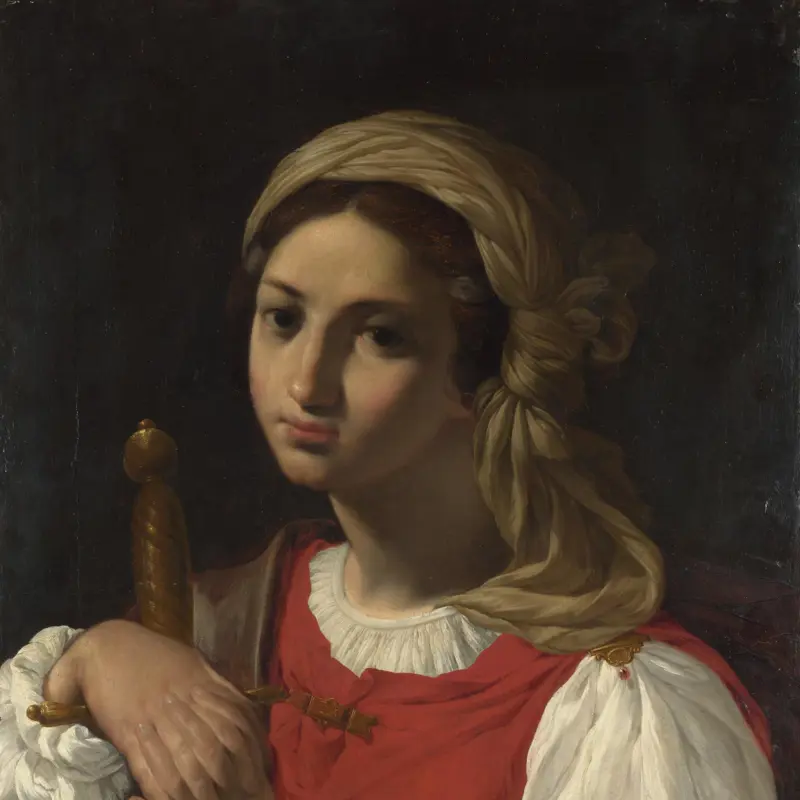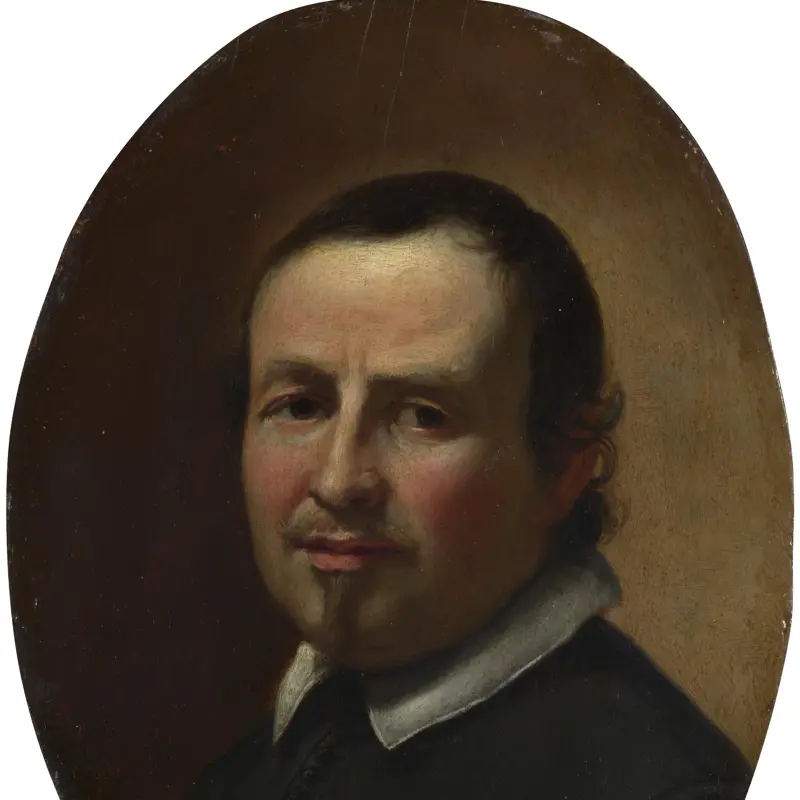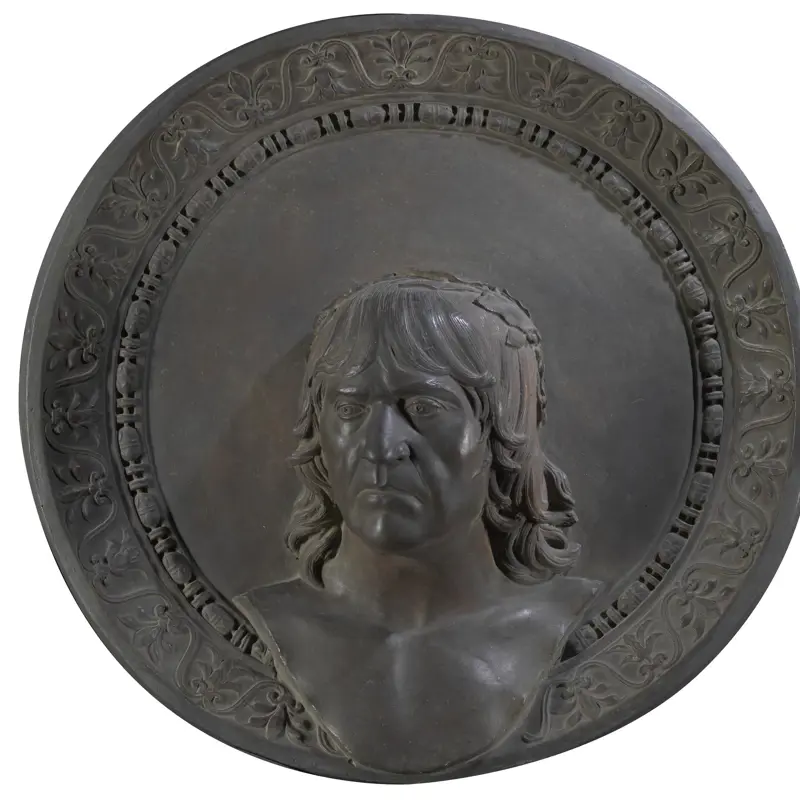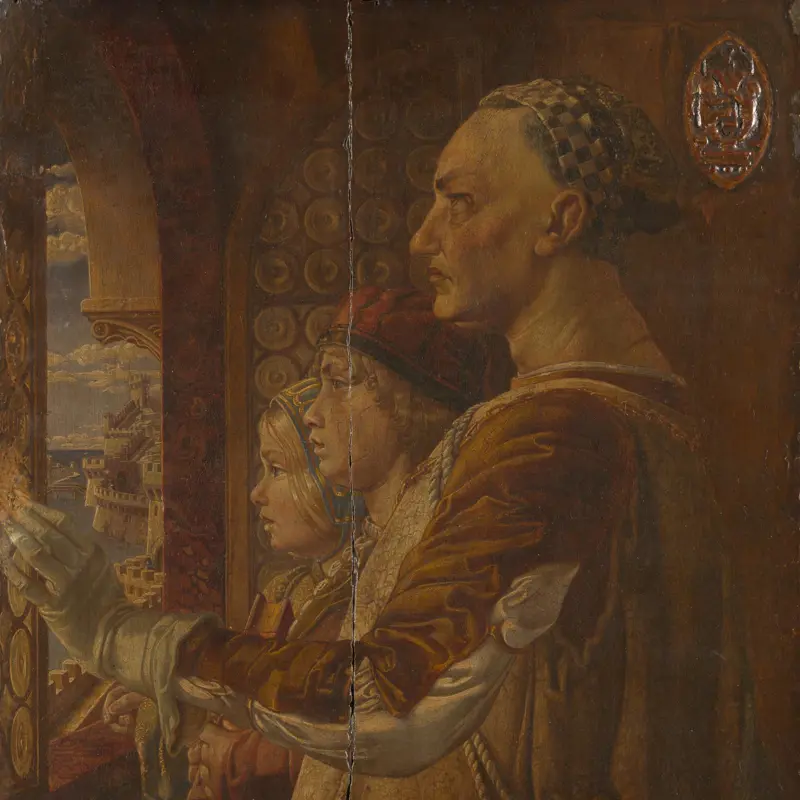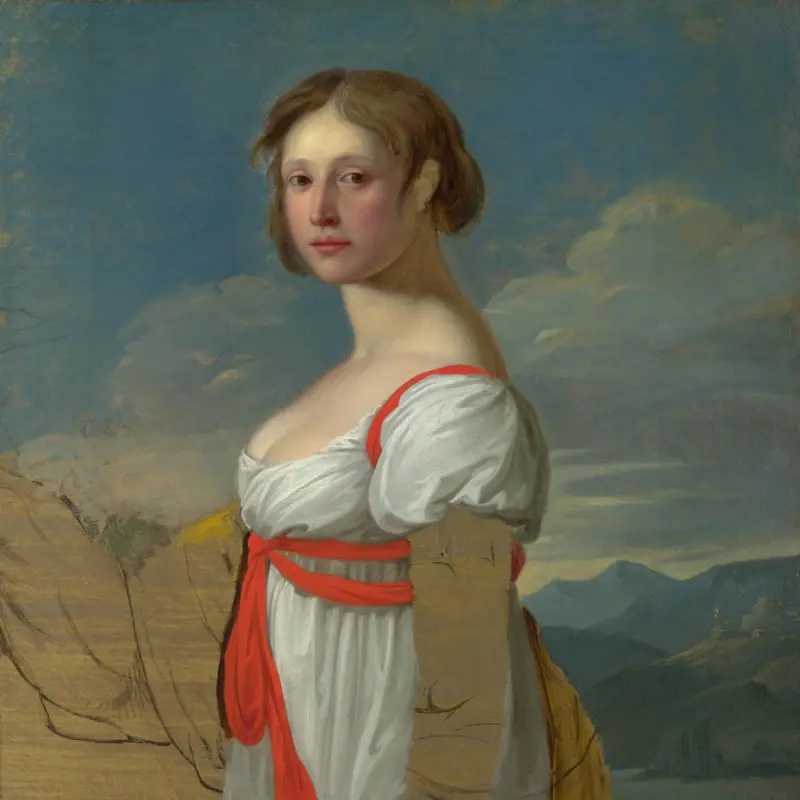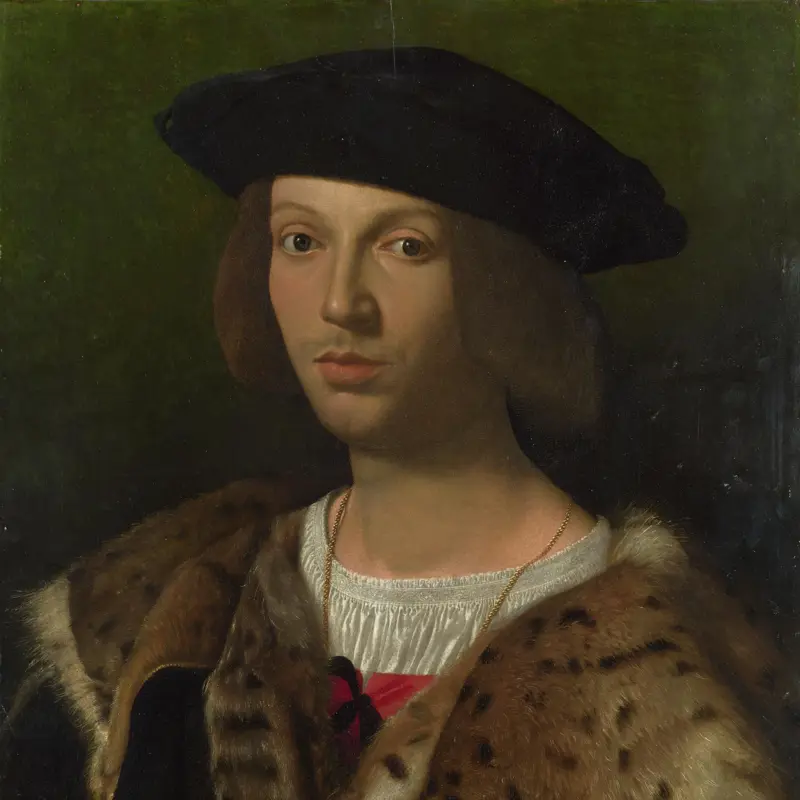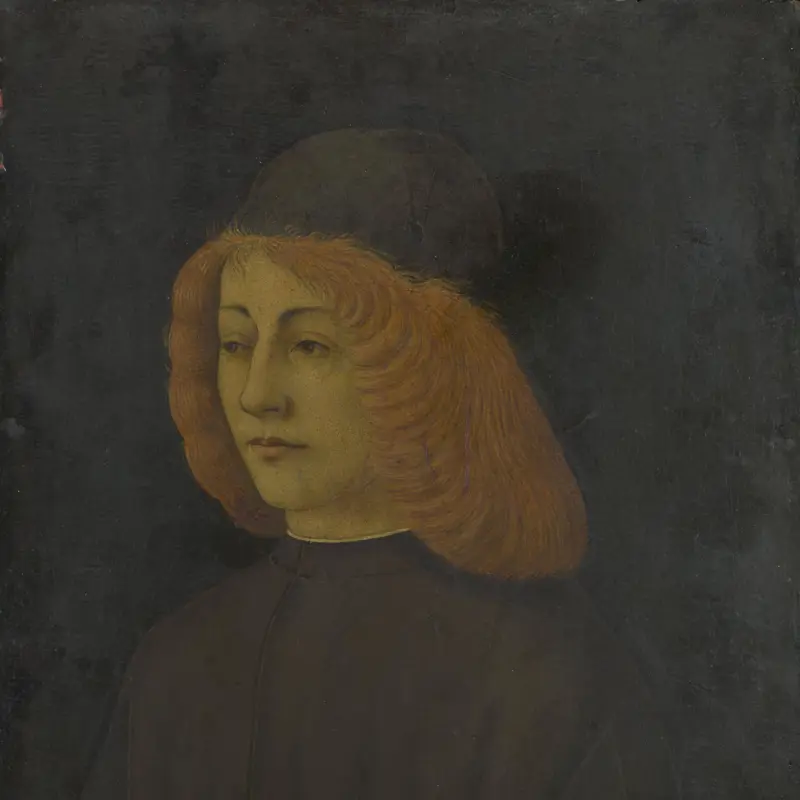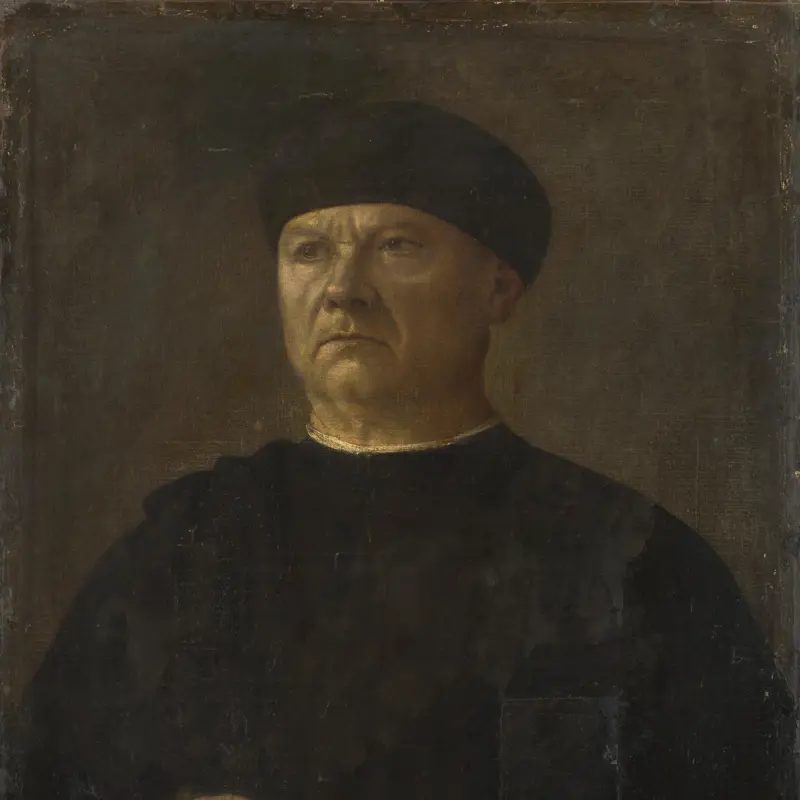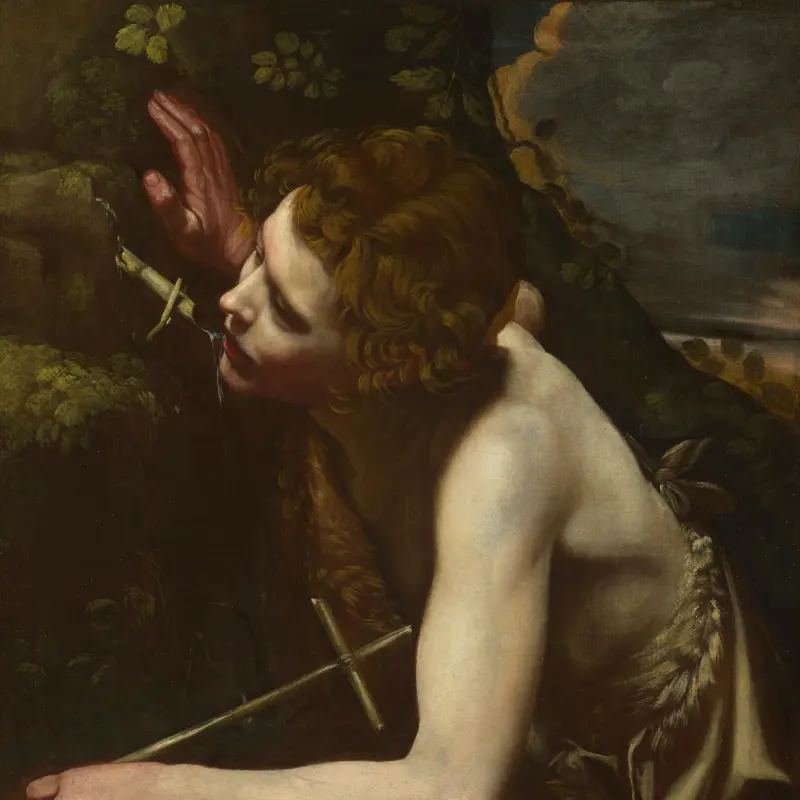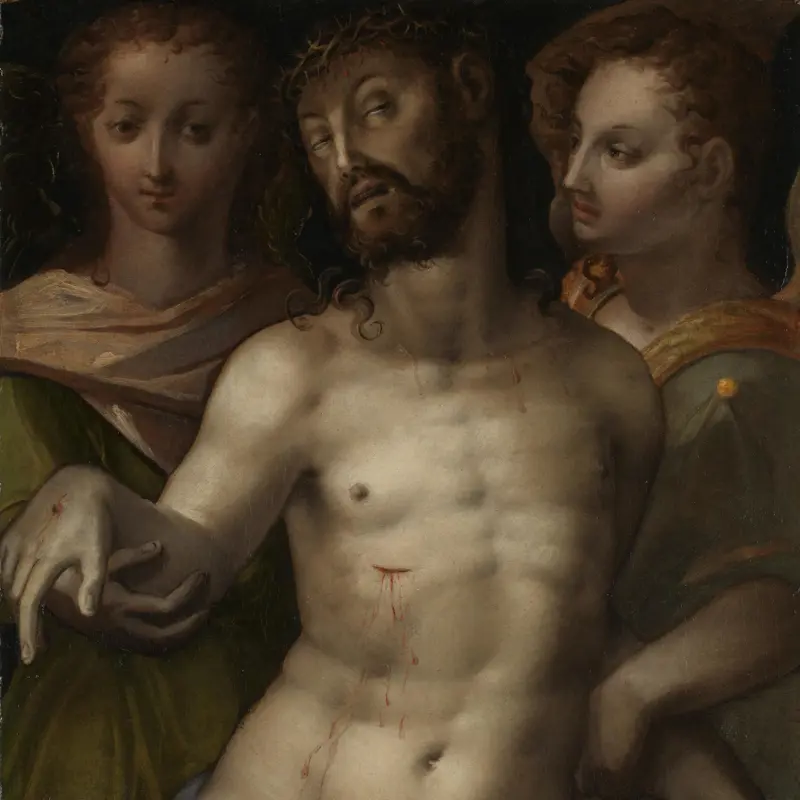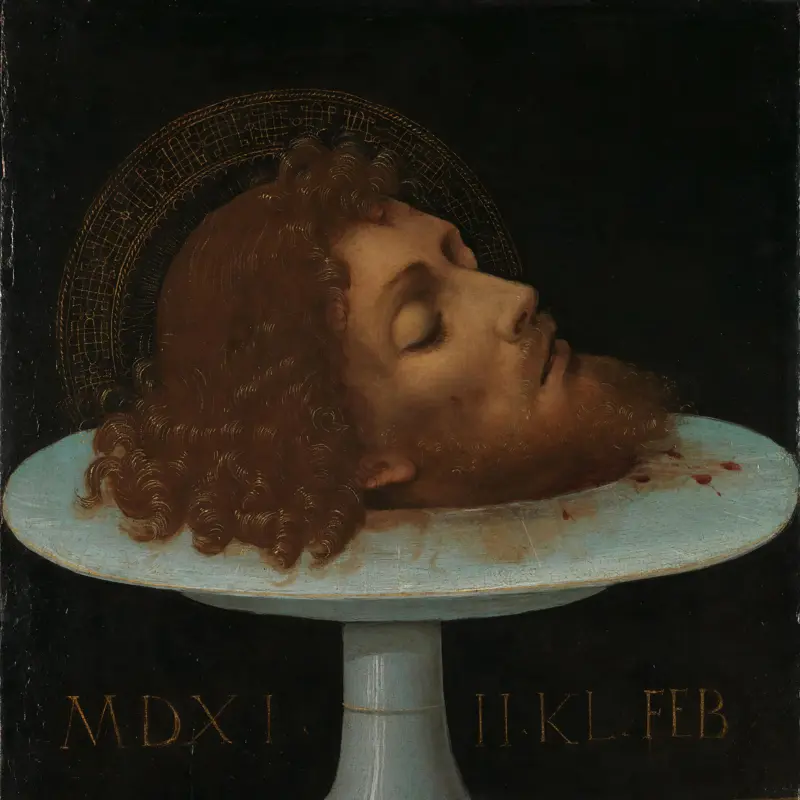Italian, 'A Man and his Wife', mid-1540s
About the work
Overview
This portrait of an unknown husband and wife is unusually intimate. The costumes have been dated to the mid-1540s. It was rare at the time for a man to be depicted with his hand resting on his wife’s shoulder. It was also slightly unusual for a woman to be shown on her husband’s right-hand side, which was regarded as the position of honour. The lady is standing before a fruiting lemon tree, perhaps symbolising fertility, and holding a pink carnation, which was a flower associated with betrothals.
The picture is badly damaged, so it is difficult to tell who painted it. The portrait came from a collection in Ferrara and may have been made in North Italy, but perhaps by a Flemish rather than an Italian artist. The costumes are provincial from northern Italy and suggest that it is not Venetian.
Key facts
Details
- Full title
- A Man and his Wife
- Artist
- Italian
- Date made
- mid-1540s
- Medium and support
- oil, originally on wood, transferred to canvas
- Dimensions
- 65.4 × 73.7 cm
- Acquisition credit
- Layard Bequest, 1916
- Inventory number
- NG3117
- Location
- Not on display
- Collection
- Main Collection
- Previous owners
Provenance
Additional information
Text extracted from the ‘Provenance’ section of the catalogue entry in Cecil Gould, ‘National Gallery Catalogues: The Sixteenth Century Italian Schools’, London 1987; for further information, see the full catalogue entry.
Bibliography
-
1838C. Laderchi, Descrizione della quadreria Costabili, 4 parts, Ferrara 1838
-
1895G. Lafenestre and E. Richtenberger, Venise, Paris 1895
-
1907B. Berenson, North Italian Painters of the Renaissance, New York 1907
-
1912A. Venturi, 'La formazione della Galleria Layard a Venezia', L'arte, XV, 1912, pp. 449-62
-
1962Gould, Cecil, National Gallery Catalogues: The Sixteenth Century Italian Schools (excluding the Venetian), London 1962
-
1975C. Gould, Delaroche and Gautier: Gautier's Views on the 'Execution of Lady Jane Grey' and on other Compositions by Delaroche, London 1975
-
1985C.T. Dowd, 'The Travel Diary of Otto Mündler', The Walpole Society, LI, 1985
-
1987Gould, Cecil, National Gallery Catalogues: The Sixteenth Century Italian Schools, London 1987
-
1990A. Ugolini, 'Rivedendo la Collezione Costabili di Ferrara', Paragone, XLI/489, 1990, pp. 50‑76
-
1998E. Mattaliano, La collezione Costabili, ed. G. Agostini, Venice 1998
-
2001
C. Baker and T. Henry, The National Gallery: Complete Illustrated Catalogue, London 2001
About this record
If you know more about this work or have spotted an error, please contact us. Please note that exhibition histories are listed from 2009 onwards. Bibliographies may not be complete; more comprehensive information is available in the National Gallery Library.

